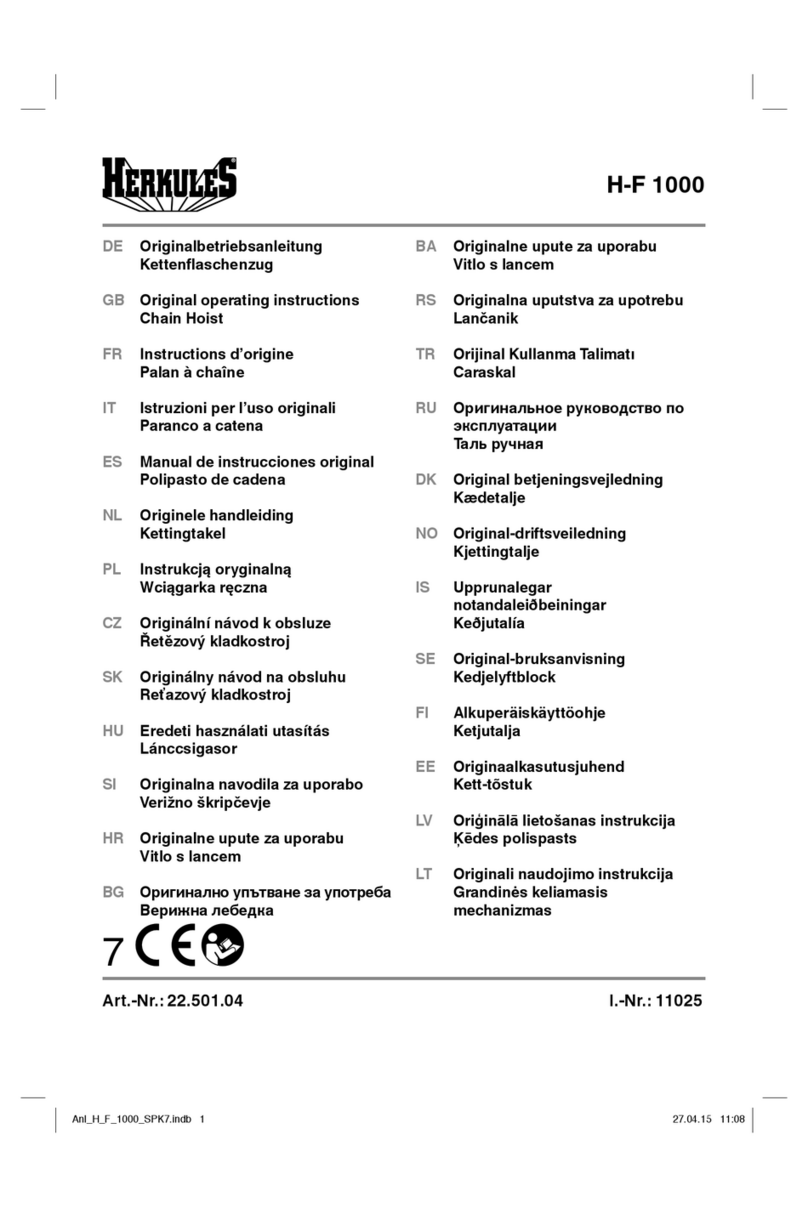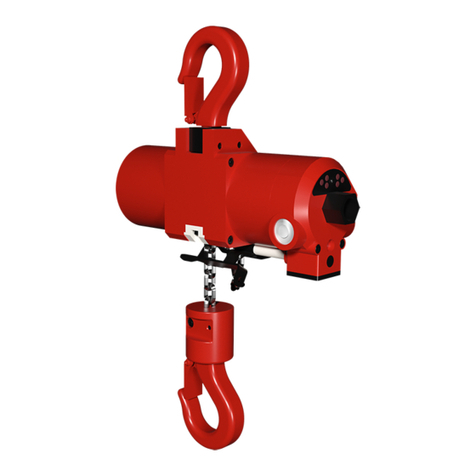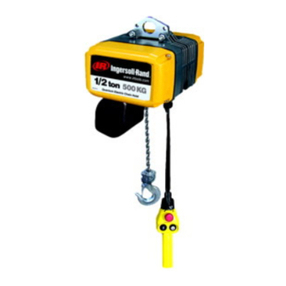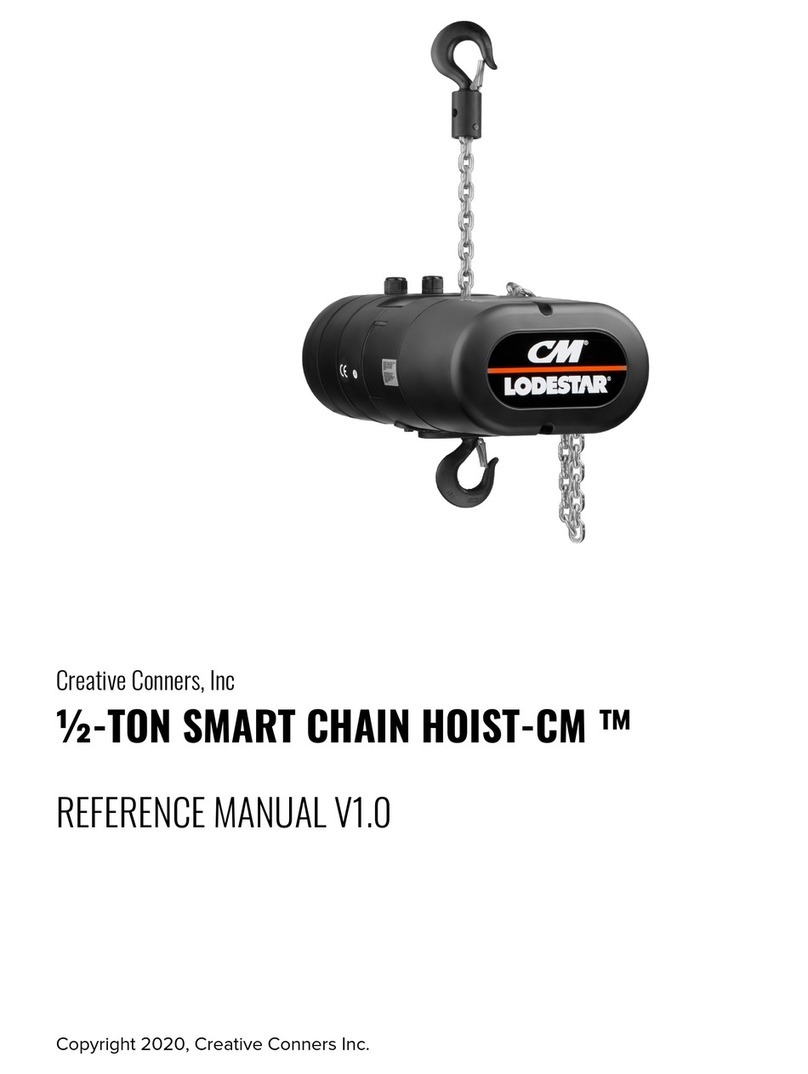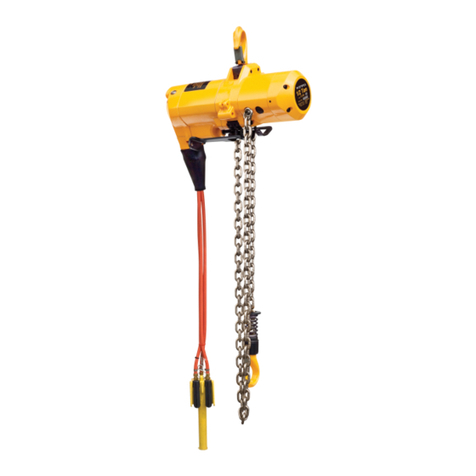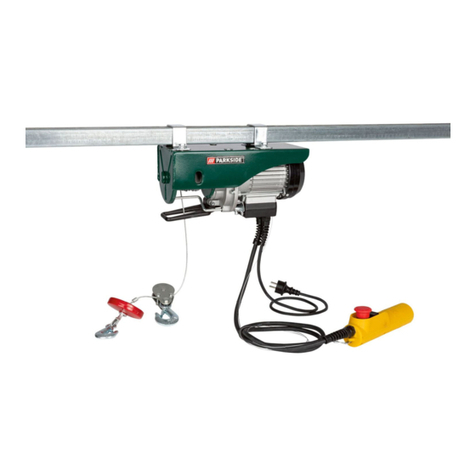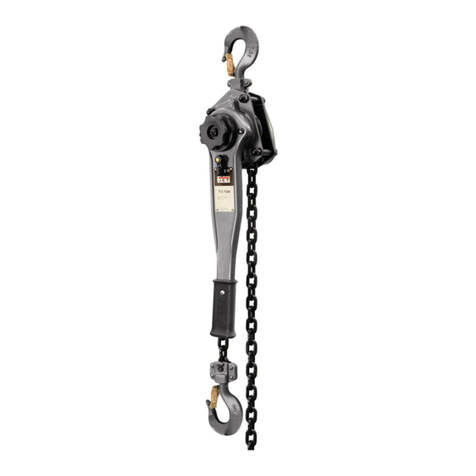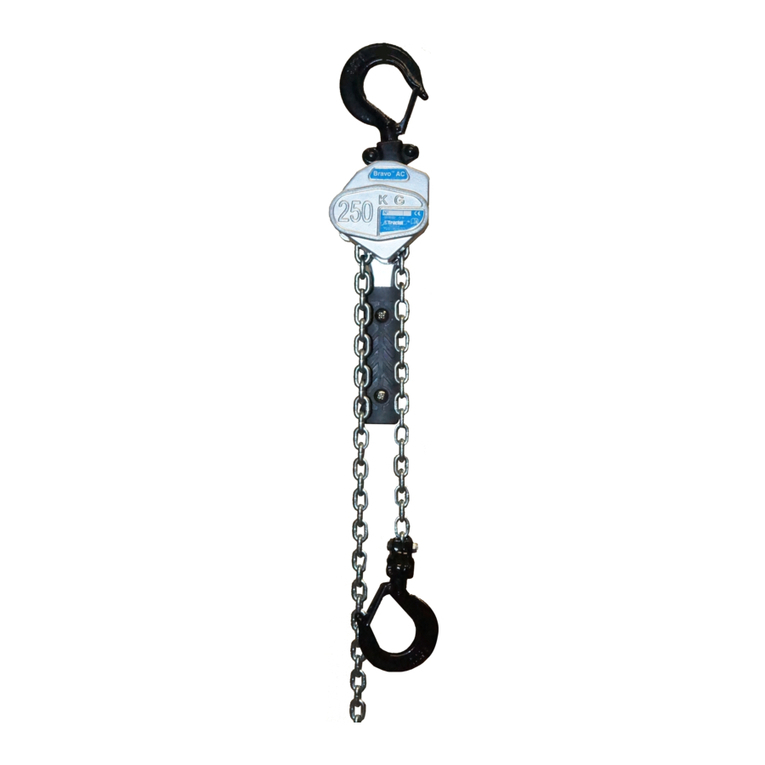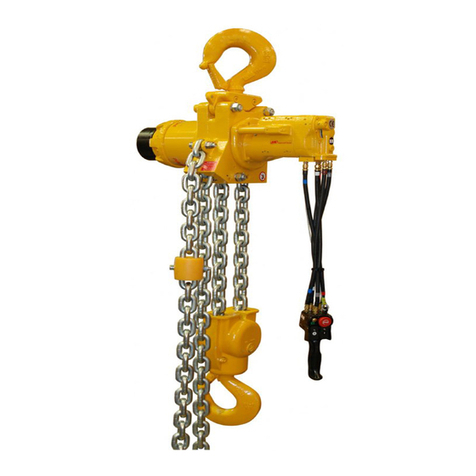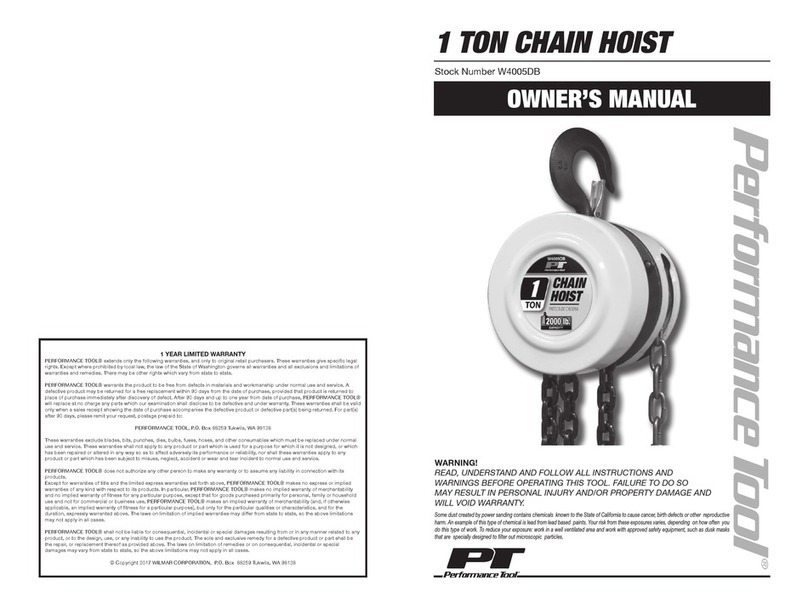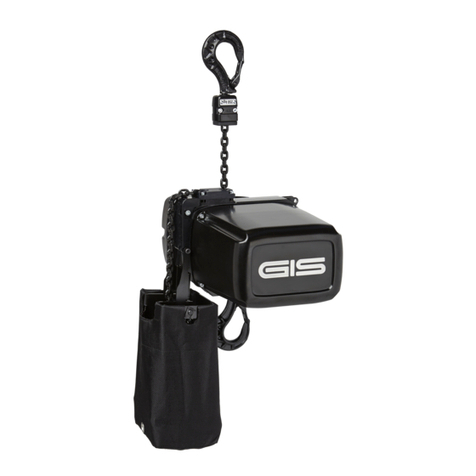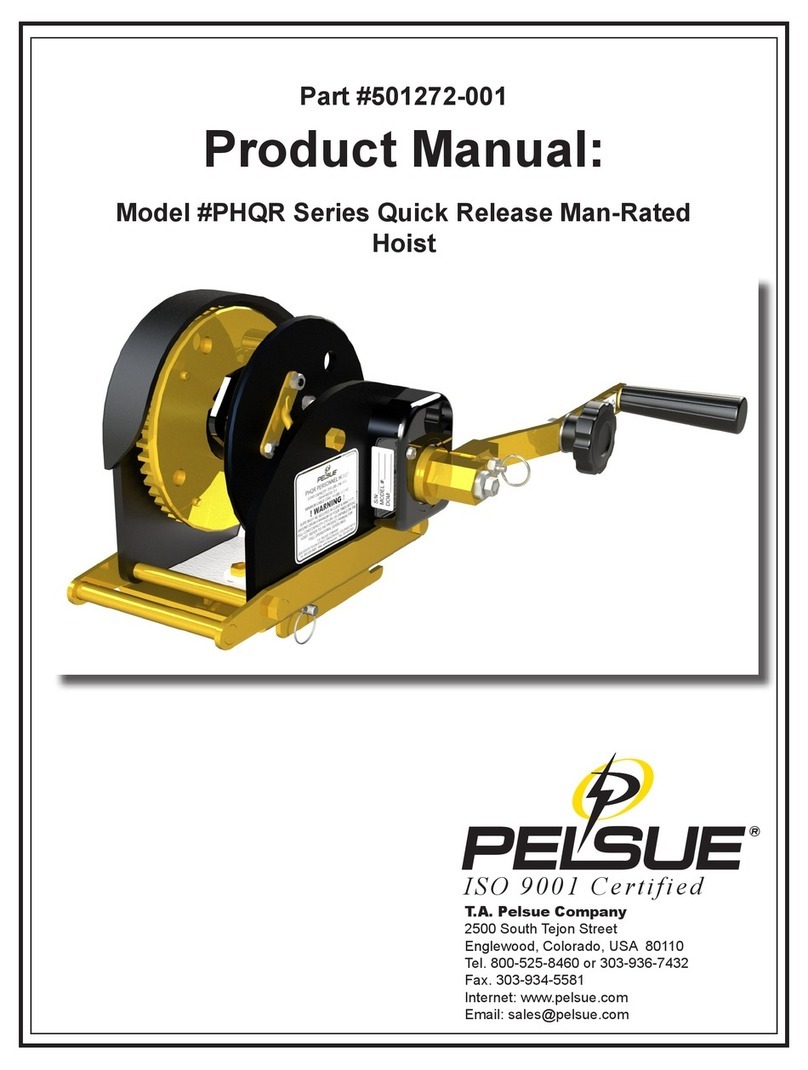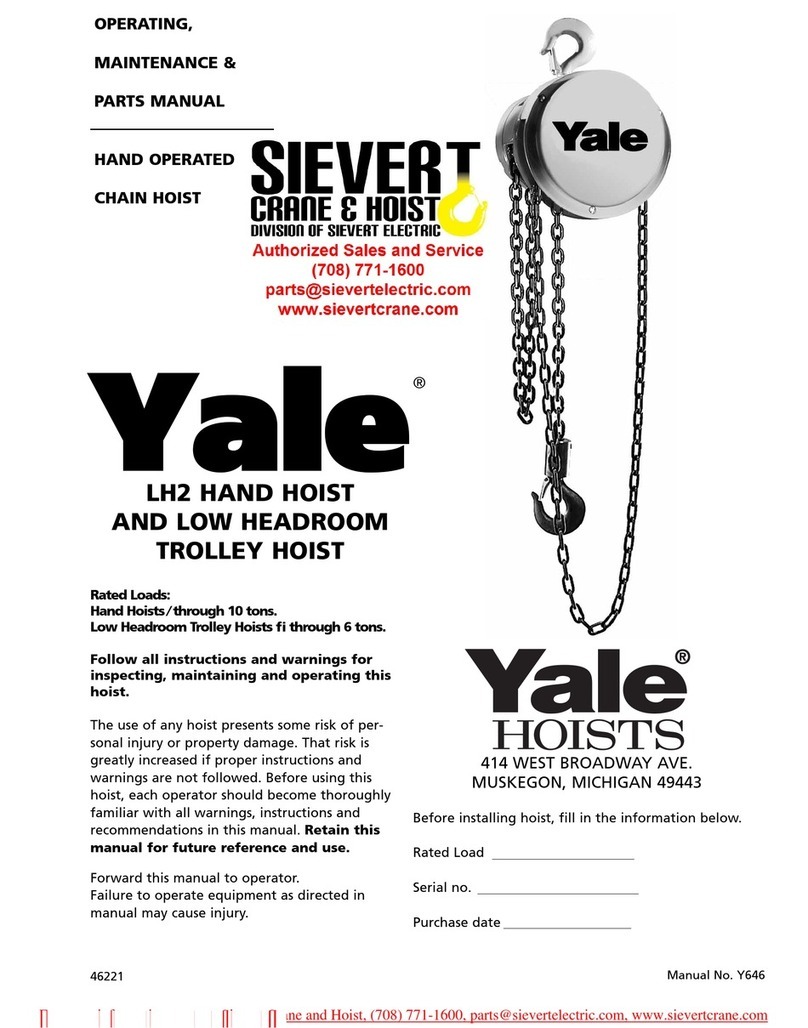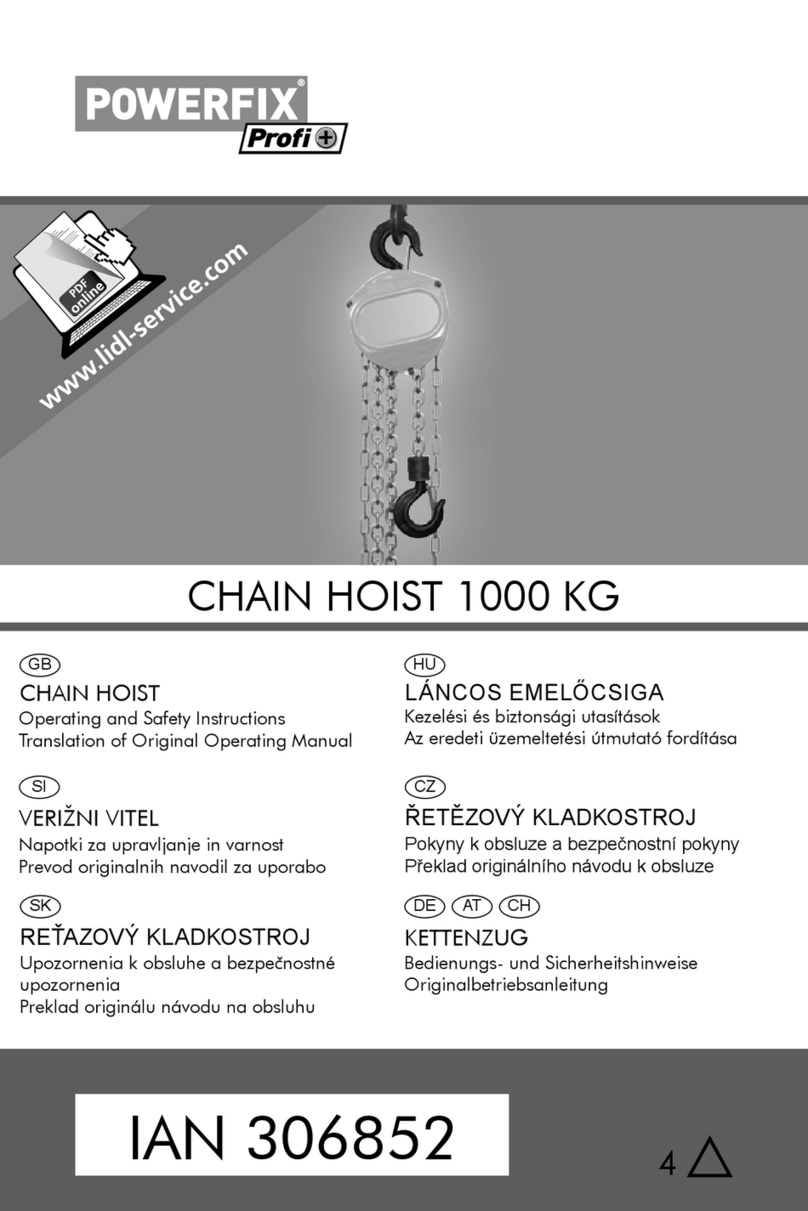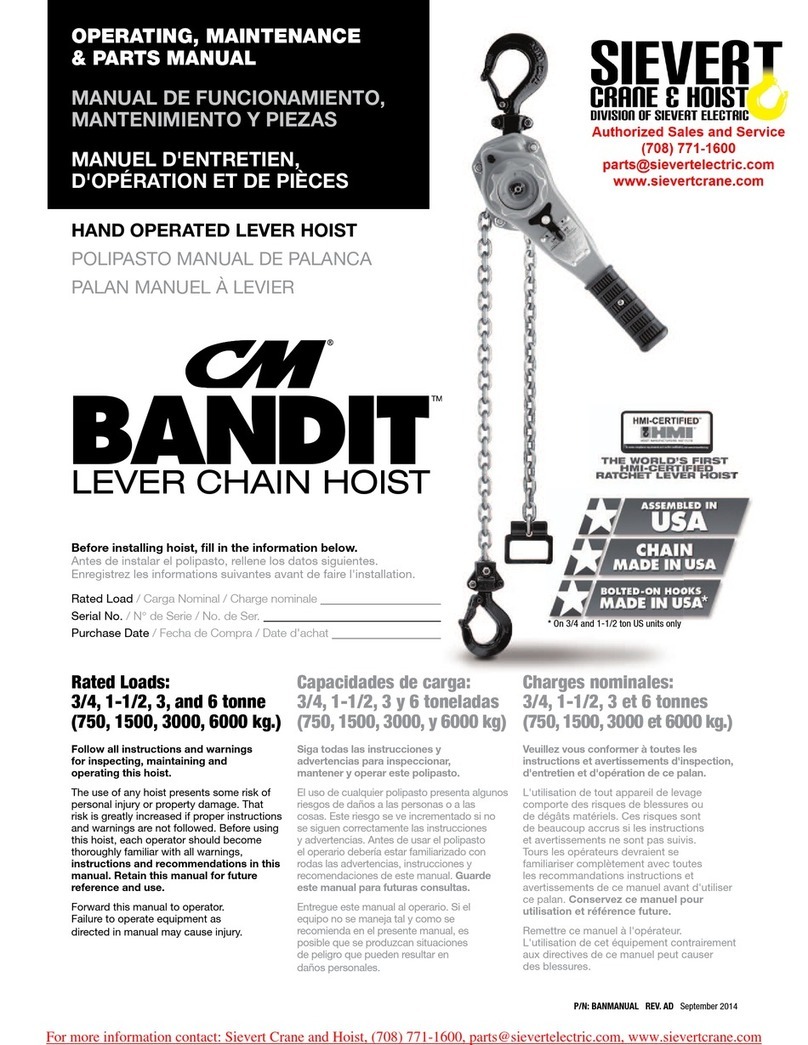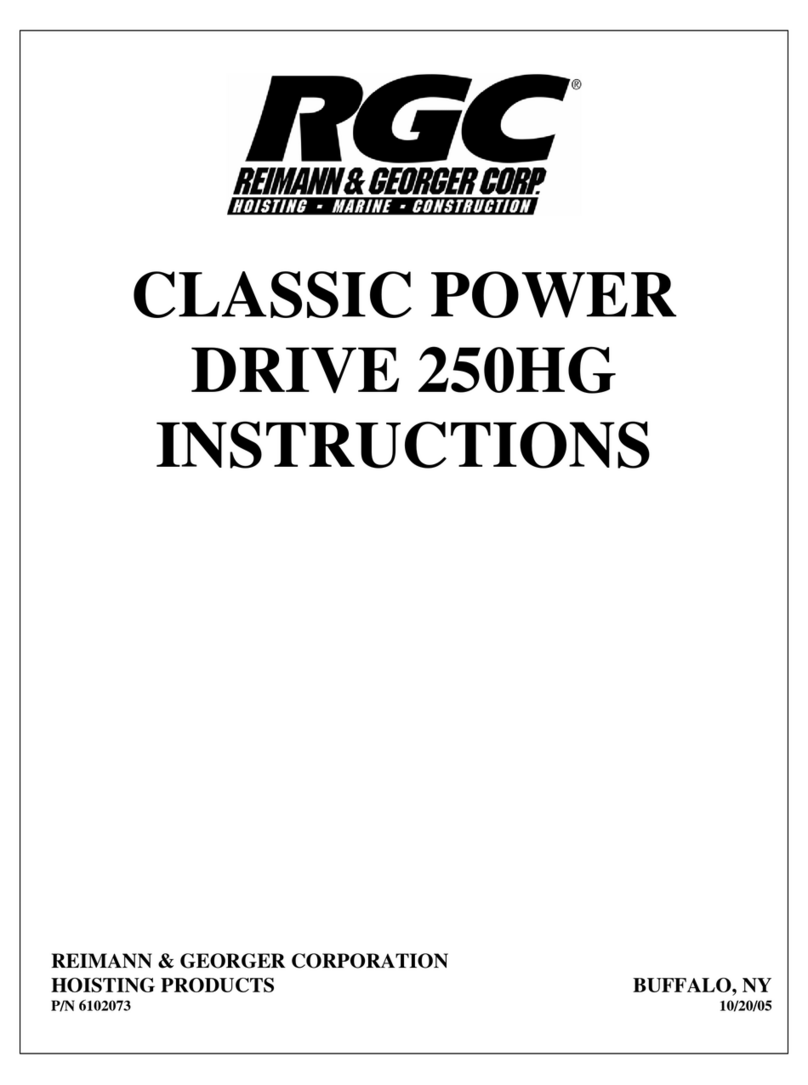
RGC HOISTING PRODUCTS PHONE: (716) 895-1156
TABLE OF CONTENTS
CHAPTER DESCRIPTION PAGE
1 SAFETY .......................................................................................................................................1
1.1 Introduction ...................................................................................................................................1
1.2 Safety Definitions..........................................................................................................................1
1.3 Handihoist Safety Labels...............................................................................................................1
1.4 Handihoist Drive Safety Rules.......................................................................................................1
2 SPECIFICATIONS .....................................................................................................................3
2.1 Handihoist Specifications..............................................................................................................3
2.2 Complete System Specifications....................................................................................................3
2.3 Nameplate and Serial Number Tag................................................................................................3
3 INSTALLATION AND SETUP .................................................................................................4
3.1 Prior to Setup.................................................................................................................................4
3.2 Handihoist Assembly................................................................................................................... 4
4 OPERATION...............................................................................................................................8
4.1 Before Operating the Handihoist...................................................................................................8
4.2 Raising and Lowering the Load.....................................................................................................8
4.3 Preparing Handihoist for Shutdown...............................................................................................9
5 DISASSEMBLY.........................................................................................................................10
5.1 Prior to Disassembly....................................................................................................................10
6 INSPECTION AND MAINTENANCE ...................................................................................11
6.1 General Maintenance Rules.........................................................................................................11
6.2 Initial Inspection..........................................................................................................................11
6.3 Daily Inspection...........................................................................................................................11
6.4 Oiling Mechanical Parts...............................................................................................................11
6.5 Wire Rope Inspection Procedure.................................................................................................12
6.6 Replacing Handihoist Wire Rope ................................................................................................12
7 TROUBLESHOOTING............................................................................................................13
8 PARTS LISTS............................................................................................................................14
8.1 Handihoist....................................................................................................................................14
LIST OF FIGURES
FIGURE DESCRIPTION PAGE
2-1 Handihoist Product Nameplate.....................................................................................................3
3-1 Handihoist Wire Rope Installation on Drum ................................................................................4
3-2 Winch to Frame Assembly............................................................................................................5
3-3 Mounting Handihoist to Track......................................................................................................6
3-4 Mounting Handwheel....................................................................................................................7
3-5 Mounting Spinner Knob to Handwheel ........................................................................................7
6-1 Wire Rope Components...............................................................................................................12
8-1 Handihoist Assembly Drawing ....................................................................................................15

